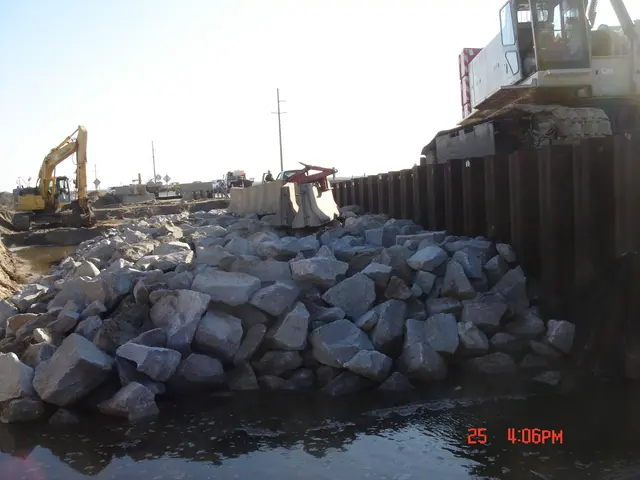What is the count of intense heat episodes encountered by your department in recent times?
France's Heatwave Alert System on High Alert Amidst Record-Breaking Heatwaves
A heatwave alert system, established by the Ministry of Health following the exceptional heatwave of 2003, has been in operation for over two decades. This system, managed by Météo-France, issues daily bulletins to establish a level of vigilance for each department in France. The criteria for heatwave alerts are based on a combination of temperature thresholds sustained over a period and the expected health risks.
There are four levels of heatwave vigilance in France: green, yellow, orange, and red. An Orange Alert (Vigilance Orange Canicule) is activated when intense heat lasts for at least three consecutive days and nights, posing health risks to the entire exposed population. This involves daytime temperatures significantly above usual levels, combined with tropical nights where temperatures do not drop below 20°C, limiting nighttime cooling.
A Red Alert (Vigilance Rouge Canicule) is reserved for extreme, prolonged heatwaves with "major health risks" and potential to disrupt daily life. This level implies exceptional conditions, such as temperatures exceeding 40°C for several days across wide areas, potentially triggering major prevention measures like event cancellations and closures.
Météo-France evaluates forecasted temperature patterns, including maximum daytime temperature and minimum nighttime temperature for a defined period (at least three days/nights), to determine these alerts. The service also considers the health risks linked to lack of nighttime cooling, which aggravates the impact of heatwaves on vulnerable populations, such as the elderly or those with health conditions. Alerts are regionally specific, reflecting local climatology and population exposure, and can be updated daily as conditions evolve.
The departments of Tarn, Tarn-et-Garonne, and Haute-Garonne have experienced 7 days of red heatwave vigilance. Isère and Drôme are the second and third most affected departments, with 142 and 128 days of heatwave, respectively. The Rhône department is the most affected by heatwaves since 2004, with 190 days of heatwave, including six at red alert.
The number of red alert days has significantly increased over the past decade. In total, the year 2025 has recorded 898 cumulative days of heatwave vigilance, a record since the alert system was put in place. Paris and the departments of the small crown have experienced 8 days of red heatwave vigilance, notably in 2019 and 2020.
The heatwave alert system has issued a daily bulletin by Météo-France, which establishes a level of vigilance for each department. The first red alert was triggered in 2019. This is the second heatwave episode of the year, with the heatwave alert episode ending on August 19, 2025, placing 65 departments under orange alert and 14 under red alert.
The intensification of heatwaves is marked by the increase in the number of red alert days, now representing 7% of all heatwave warnings. The first wave of intense heat struck almost the entire French territory between late June and early July. The number of cumulative heatwave vigilance days over the past twenty years (2014-2024) is 4,111 days, more than five times higher than in the previous decade (2004-2013).
Météo-France works together with public health authorities and follows guidelines within the national ORSEC Plan (the National Emergency Plan for natural disasters) for coordinated response and communication. The departments of Lot-et-Garonne and Gers have experienced 10 days of red heatwave vigilance. Ardèche is the fourth most affected department, with 127 days of heatwave.
The heatwave alert system remains a vital tool in protecting the public from the harmful effects of extreme heat. As the frequency and intensity of heatwaves continue to increase, it is crucial for citizens to stay informed and take necessary precautions to stay safe during these events.








